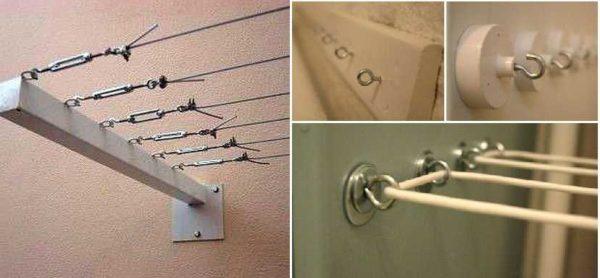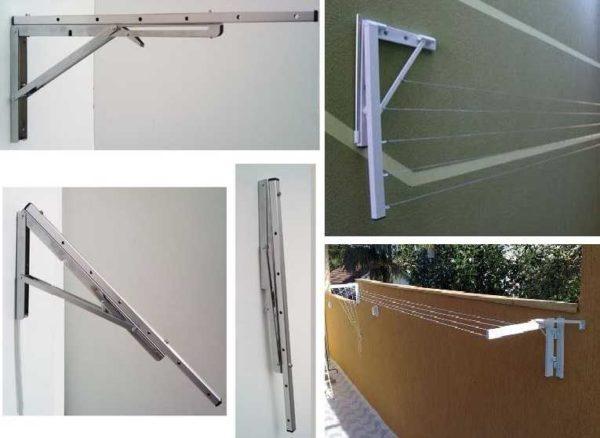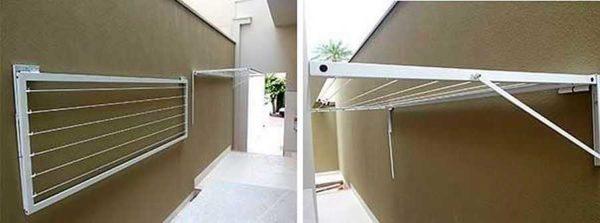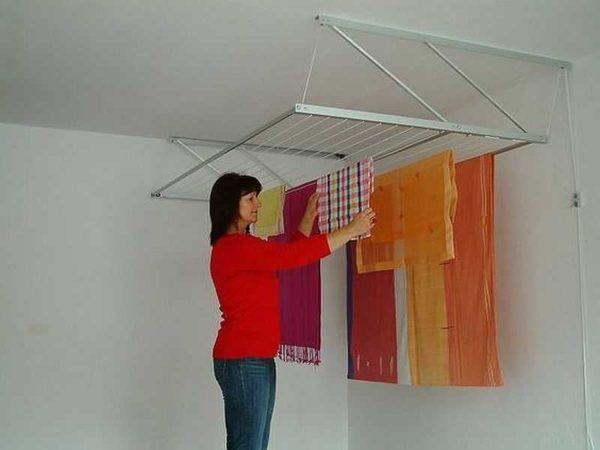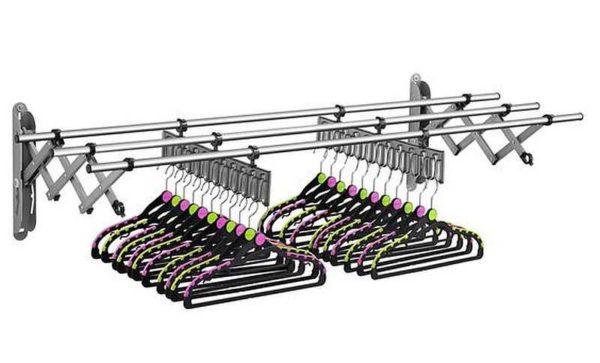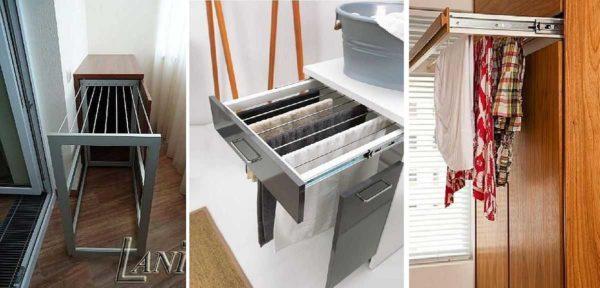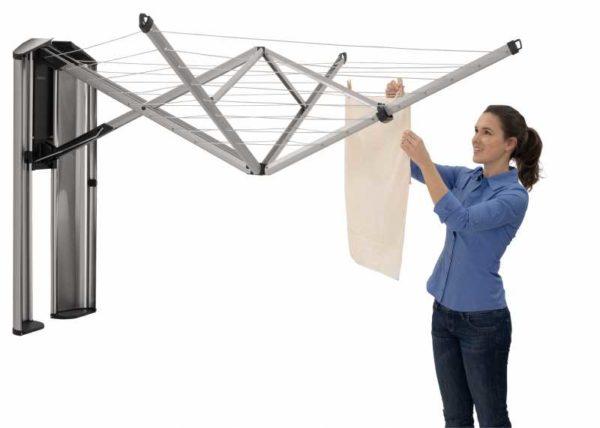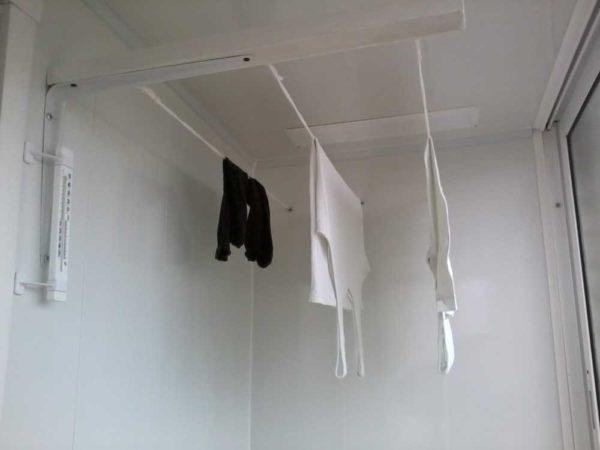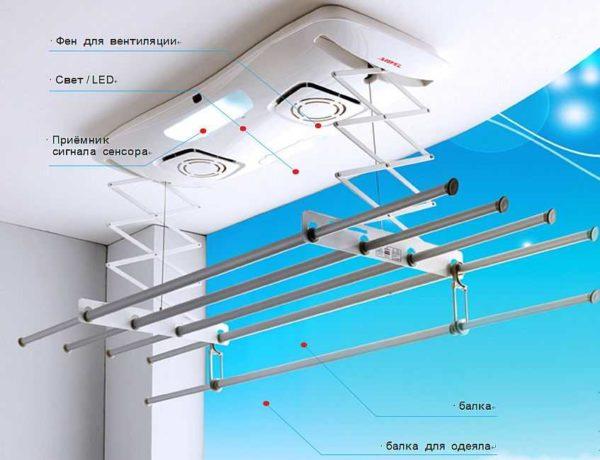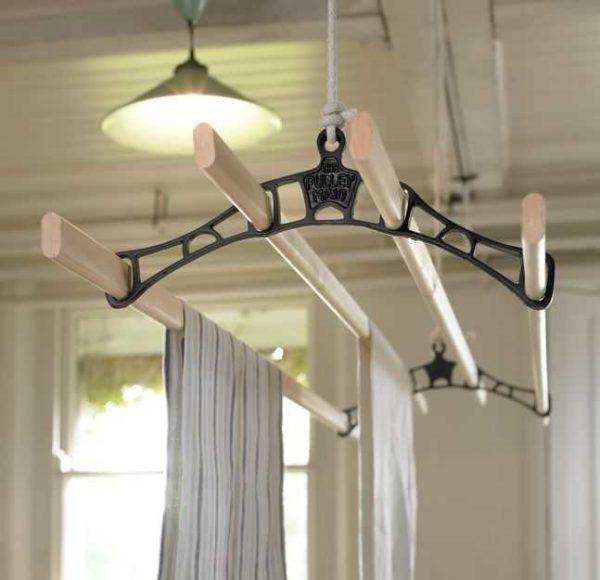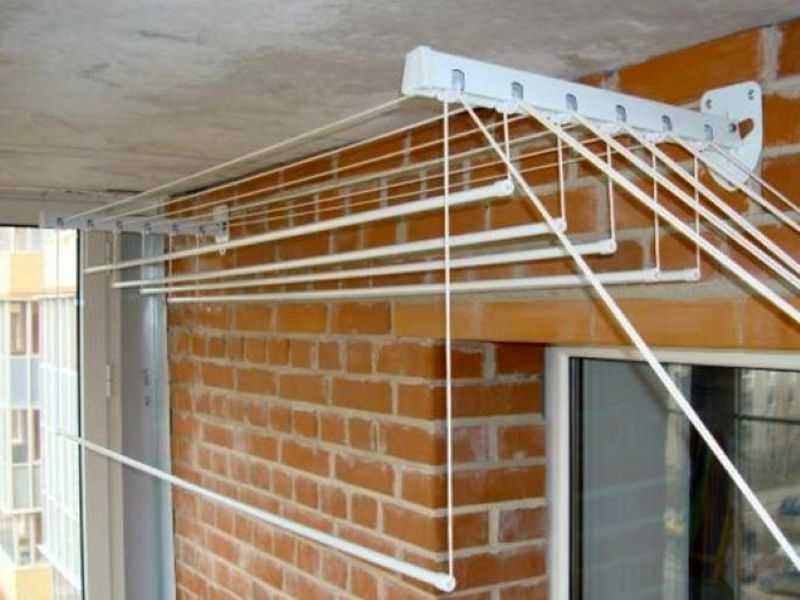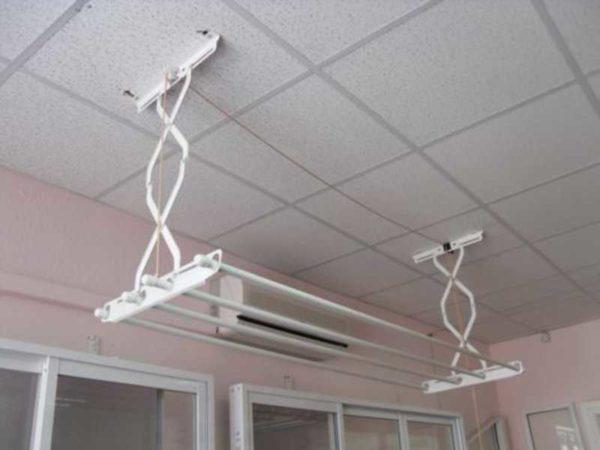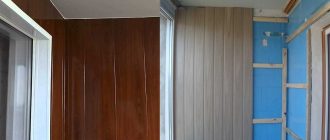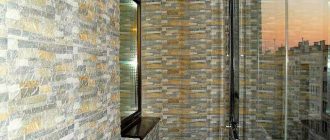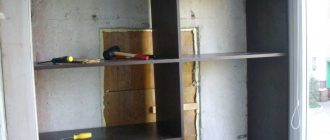For those who live in high-rise buildings, drying laundry is a pressing problem. Over the balcony to hang out – themselves not too pleasant, and not in all cities is acceptable. For many people, the way out becomes a dryer for laundry on the balcony. They are different models and ways of mounting or installation.
기사 내용
Way of installation
According to the method of installation, the dryer for laundry on the balcony can be:
From the names, the peculiarities of the installation of each model are clear. It may only require explanations about hinged clothes dryers. They are usually small in size – 60-100 cm long, on 3-6 ropes / crossbars (pictured).
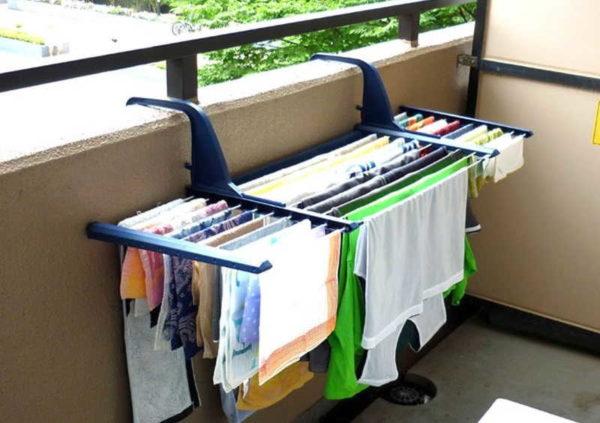
Equipped with two or three hooks of large diameter, which allow you to cling the design to horizontal partitions, for example, for the balcony fence. They can be located indoors or outdoors, so the option is mobile and convenient. But only for storage you need to find a place or make loops on the wall, for which you can hook the hinged clothes dryer.
Ceiling models
Dryers for laundry, fixed on the ceiling of the balcony or loggia – one of the most popular models. They are two slats with attached crossbars or ropes, on which the laundry is hung.
There are two main types of ceiling dryers for the balcony:
- With independent suspension of each slat. The most popular models in this group have the name “Liana” and GIMI Lift. This is the same design, just the manufacturers are Russian (Liana) or foreign. They are convenient in operation, as they allow you to lower and raise one bar at a time, to place them at different heights.
Linen dryer with ceiling mounting - A single suspension for the entire structure. Several bars (from 2 to 6) are attached to telescopic hangers. They can only be lowered and raised together.
The second option is easier to install, has a lower cost, but it is less convenient. All slats are at the same height. This makes it difficult to dry the laundry, which is located closer to the wall or in the middle rows. The second point: loaded with wet laundry, the dryer is not so easy to lift.
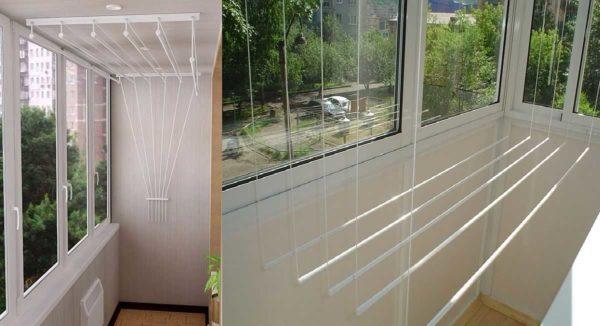
Dryers with independent suspension are a little more difficult to install. All the crossbars are attached to two bars on the ceiling, but to each of them goes a rope, which and allows you to lower / raise the bars for hanging laundry. So when installing, in addition to installing the bars on the ceiling, it is necessary to fix a bar on the nearby wall, on which the ropes are fixed. Crossbars in ceiling dryers of this type can be made of plastic, steel covered with powder enamel (Gimi) or aluminum (Liana). You can also find wooden bars from other manufacturers, but the above mentioned ones are represented by a large number of models.
Wall-mounted models
The most famous model is a wall-mounted laundry dryer for the balcony with a twine attached to the opposite walls. In homemade versions, hooks are hammered into the wall or a bar is attached, on which all the same hooks are fixed (these can be bent upward nails). Twine/thin ropes are stretched between these hooks. This is a well-known variant. Far from the most aesthetic, but the cheapest and very common.
Improved and ennobled variant – a clothes dryer for the balcony with twisting ropes. It consists of two parts: stationary, which is attached to one of the walls, and mobile, which we attach to the opposite wall before hanging laundry, and remove it when it is dry and removed.
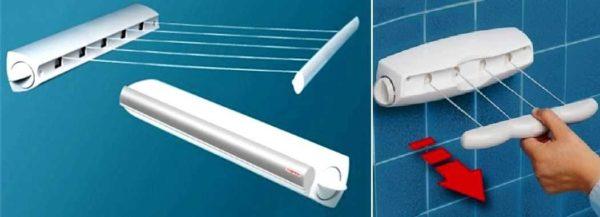
There are a few more designs of wall mounted clothes dryers for balcony and loggias. They have a common feature – they are mounted on angled or T-shaped brackets. And on the structure can be very different. For a small amount of laundry, folding wall dryers on the balcony are convenient. In the folded state, they do not clutter the space, unfold and fold easily – you only need to pull the edge bar and you can hang laundry. The model is also easy to fold – just push the edge bar in the direction of the wall. Everything is folded into a compact rectangle.
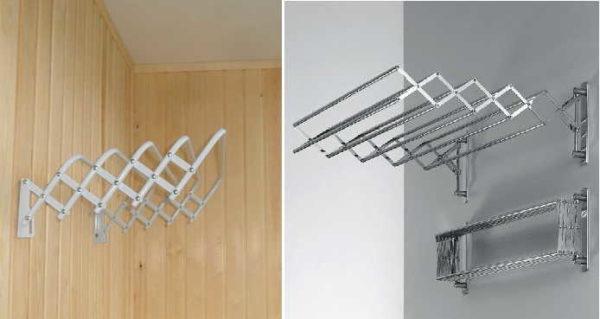
The disadvantage of these dryers is one: when closed, you can not hang anything on them. And they can be folded only in their entirety – one or two slats can not be put forward.
Also do not clutter the space folding wall dryers. They are a frame with stretched ropes or rods. The frame is movably fixed directly to the wall or in the housing. It can be fixed with stops, strips, chains. If you want to make a drying rack for laundry on the balcony with your own hands – these are the simplest, reliable and compact models.
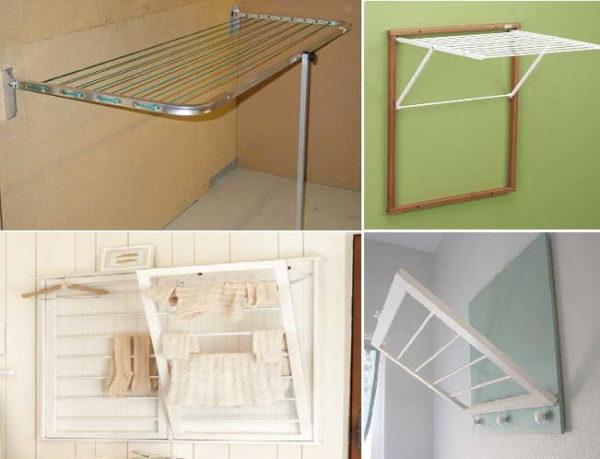
If necessary, it is tilted, the angle of inclination is determined by side holders – stop bars, but there are models and with tight bands.
There is also a wall-mounted version of the above-described “Liana”. In this case, the bracket to which the strips are attached is fixed on the wall above, the strip with the threads of adjustment on the same wall, but below.
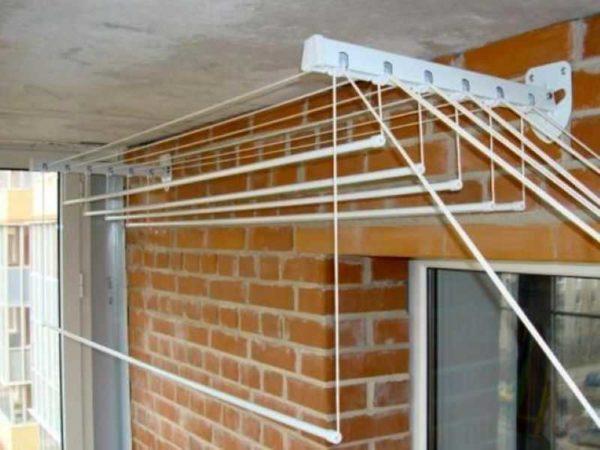
When installing wall-mounted models of clothes dryers, it is desirable to attach them using all the holes that are in the brackets. Then you can hope that even loaded to the maximum, they will not fall down.
Floor installation
This group does not require installation at all, but to save space, floor dryers for laundry are usually made foldable. For the most part, they are made of thin metal tubes coated with powder paint. More expensive models can be made of stainless steel, and there are also wooden. The latter are mostly homemade. In any case, in our stores wooden ones are rare.
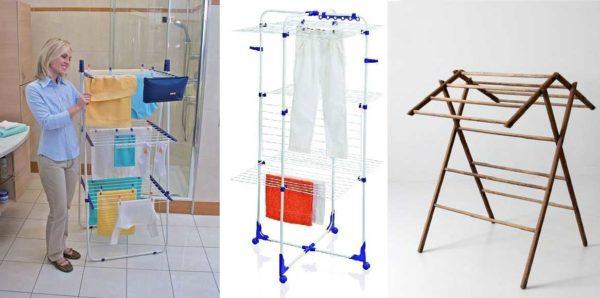
In any more or less large store, you will find models with folding legs and hinged sides. And there are both simple models and electrically heated. In this case, inside the tubes on which the laundry is hung, built low-power heating element. If during the operation of the heater touch the tube, it will be pleasantly warm to the touch, but not hot, so there will be no harm even for the most delicate fabrics.
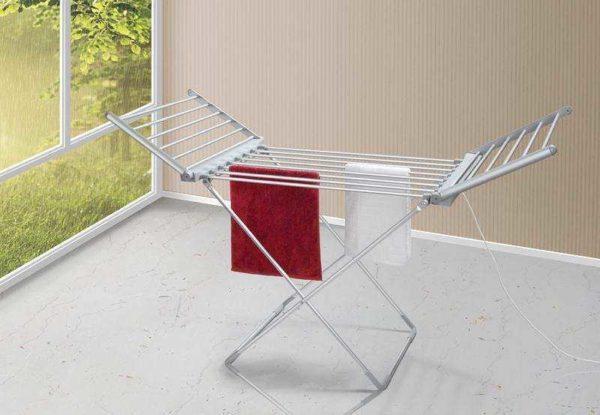
Models of clothes dryers with heating, can have heaters only in one of the parts (as in the photo above) or across the entire working surface. In the second case, electricity consumption is greater, but not much, since the surface is heated only slightly.
Folding floor dryers for laundry are very many. After all, laundry has always dried since man had clothes. Here masters and try to come up with something interesting, roomy and, at the same time, compact.

Selection parameters
Dryer for laundry on the balcony is chosen not only by design, but also by parameters:
- the number of rods and their length;
- material of rods;
- material of brackets.
On the materials, everything is clear. The best, but also the most expensive – stainless steel. Just don’t confuse it with chromed steel. As a rule, chrome plating very quickly flies off, after which the metal begins to rust. Normal steel in powder coating is not bad, but only if the technology was not violated during painting. Otherwise, rusty spots will also appear.
Very good combined version: the supporting parts of the structure of steel with powder coating, and the lintels on which to hang laundry – of plastic. This type of dryers can be called optimal in terms of price/quality combination. Modern plastics – a strong enough material that can withstand the load of laundry, it is not very expensive and does not change its operational characteristics for a long time. But here in the supporting structures, especially in the joints of the legs of folding floor models – the presence of plastic is undesirable. Here the load is too heavy for plastic.
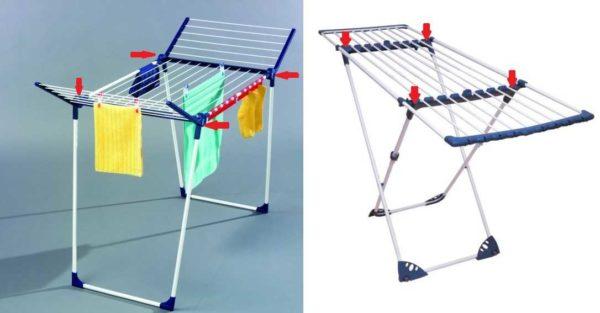
The totality of characteristics will determine how convenient or not to use a particular model. For example, for drying bed linen, rods with a length of at least 2 meters are optimal. In this case, any part of a double bed set can be hung without folding.
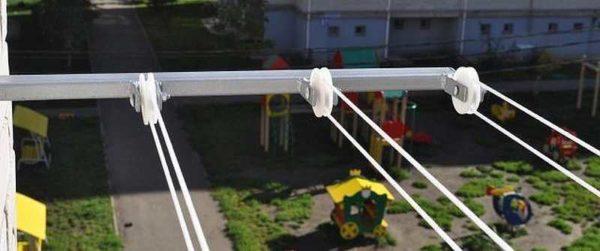
The amount of laundry that can be hung at one time is determined by the total length of the rods. It is usually in the description, but if not, you can multiply the number of rods by the length. This gives you the same characteristic. Here, of course, the bigger the figure, the more laundry you can hang. But, on the other hand, the more space on the balcony or loggia will need to be allocated to the dryer.
Photo of interesting ideas
Drying rack for laundry can also be original and interesting. There are models that are convenient and compact, there are those that surprise with the presence of technical “contrivances”. In general, interesting models are presented below.
